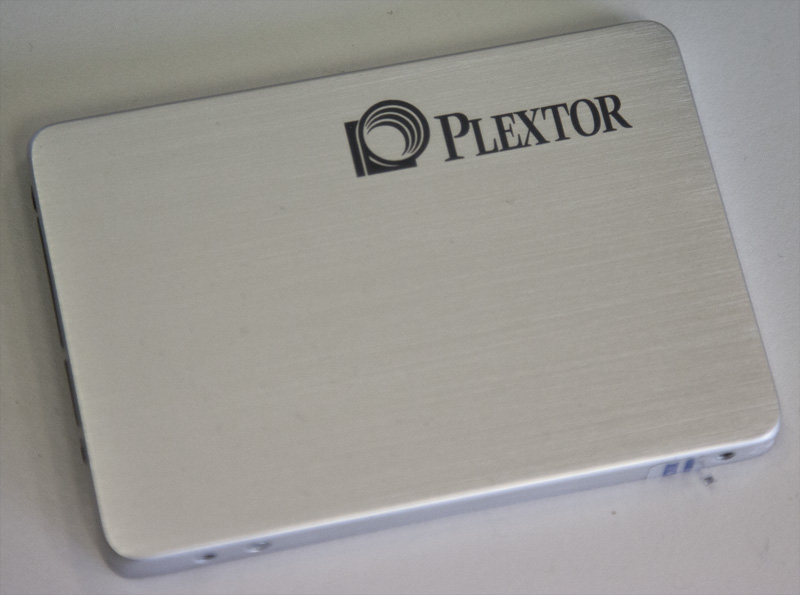 Up until I embarked on this review, my strongest memory of Plextor is their dominance of the optical drive market in the 1990s. Simply put, they had the best CD-ROM writer in the days when making “coasters” was commonplace. These days Plextor has retained their storage beginnings with a focus on Solid State Drives (SSD). DigitalReviews would like to thank Plextor for providing a M5Pro (PX-256M5P) Xtreme for review.
Up until I embarked on this review, my strongest memory of Plextor is their dominance of the optical drive market in the 1990s. Simply put, they had the best CD-ROM writer in the days when making “coasters” was commonplace. These days Plextor has retained their storage beginnings with a focus on Solid State Drives (SSD). DigitalReviews would like to thank Plextor for providing a M5Pro (PX-256M5P) Xtreme for review.
Introduction
I have to admit I have largely allowed the first few generations of SSD to pass by me. It is not that I was not interested, the promises of super fast disk access was something I desperately desired. My usage pattern for local storage means the lower capacity HDDs are totally unsuited to me. Horror stories of catastrophic failures (DR has had its fair share of those!) meant I was disinclined to trust my workhorse with one, which is exactly where I would need the performance. Lastly the high cost of entry was also a huge deterrent when there are competing budget priorities and thus owning an SSD was relegated to an luxury item.
With the cost of SSD steady in the “well affordable” price range and increasing frustration living with a standard spindle hard disk I started looking into a best bang for bucks SSD. The rated specifications on the M5Pro Xtreme caught my eyes and Plextor was kind enough to provide their flagship SSD for testing.
First Impressions
There have been so many SSDs out in the market now with little differentiation except for price point. For a while, all the rage was the SandForce controller but now it seems everyone have their own controller now. The Plextor M5Pro is billed as a “professional SSD designed for business and advanced users who demand high performance, reliability, and true data integrity”, uses the Marvell 88SS9187-BLD2 (Monet) controller. At the time of launch I believe this was only the second drive to utilise this controller and the only one to be coupled with 19nm Toshiba Toggle NAND.
Plextor runs their own custom firmware on the M5 series to squeeze the best performance they can out of the unit. The M5Pro Xtreme supports full drive encryption via AES-256 and the latest 128-bit error correction codes. The claimed performance (using Windows NTFS) is random read/write speeds of up to 100,000/88,000 IOPS and sequential read/write speeds up to 540/470 MB/s. These stunning figures making it an ideal candidate for heavy workloads.
In Action
Benchmarking is a fraught process at best of times. There is the sustained MB/s performance which is primarily a marketing figure, then there is the 4K random IOPS performance which is more a real world usage profile. Overarching any of these figures is the test rig, hardware, software and the overall system configuration. In my case the test rig is my HP Elitebook 8460p with a SATA 6Gb/s interface.
Intel(R) Core(TM) i7-2720QM CPU @ 2.20GHz, 4 Cores, 8 Logical Processors (Sandy Bridge)
Radeon HD 6470M
8GB RAM
Windows 7 Enterprise
CrystalDisk Mark (portable)
Benchmarking tests were ran in the following configurations:
via eSATA dock running with a SATA 3Gb/s interface
internal to the test rig (but running as base OS)
The results are as follows:

Taken in isolation, these figures are not bad but definitely not pushing the envelope Plextor advertises. In comparison the OCZ Vertex 3 quotes specifications of 550 MB/sec read speeds and 500 MB/sec write speeds.
 Specifications
Specifications
Capacity: 256GB
DRAM cache: 512MB DDR3
Read/Write speed (using Windows NTFS)
Sequential read speed (SATA 6Gb/s): up to 540 MB/s
Sequential write speed (SATA 6Gb/s): up to 460 MB/s
Random read Speed (IOPS 4KB): up to 100,000
Random write Speed (IOPS 4KB): up to 86,000
Power consumption: 0.25W
Operating temperature: 0°C ~ 70°C
Shock: 1500G, at 1 msec half-sine
Vibration: 7 ~ 800Hz, 2.17Grms (operation)
MTBF: 2,400,000 hours
Warranty: 5 years Plextor’s Warranty Service
Compatibility: Microsoft Windows Family / Linux / MacOS
Command set support: TRIM, S.M.A.R.T., NCQ, ATA/ATAPI-8
Data encryption: supported
Firmware upgrade: supported
Interface: SATA 6Gb/s, compatible with SATA 3Gb/s and 1.5 Gb/s
Dimenions: 69.85 x 100 x 7mm (WxLxH) (2.75 x 4.0 x 0.276″)
Weight: 70g (2.47 oz)
In the Box
Drive
Quick installation Guide
3.5″ bracket
Conclusions
Whilst I never hit the soaring heights of the Plextor marketed figures unsurprisingly, I refer to the guru at Anandtech who concludes that the M5Pro is good but does not break any new barriers. Personally I could not be happier about the performance of my notebook, particularly when running virtualised machines it feels like a whole different beast. Unfortunately (or fortunately for Plextor) there is no apples to apples comparison. The only other SSD using the same controller has 20nm NAND and there is no test result data in the wild that I could find.
The Plextor M5Pro Xtreme (PX-256M5P) is available for around AUD$250 which places it roughly on par with the competition and well below the top end such as Samsung’s SSDs. Is it worthwhile getting a Plextor over say, a slightly cheaper OCZ? My thoughts would be that with the newest controller and 19nm NAND, I would bank on performance improvements coming from firmware upgrades. Whereas with a more established product line, all the performance is likely to be close to limit already. Check out where to buy the M5Pro Xtreme here.


